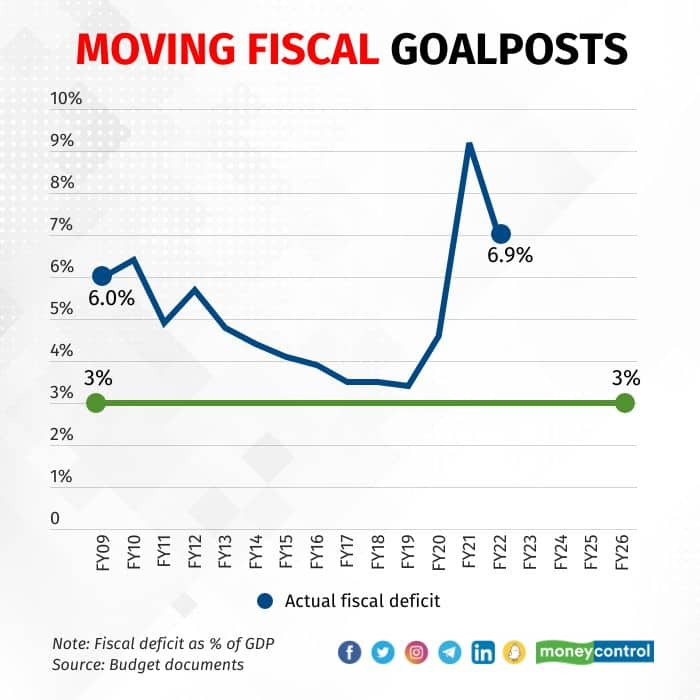A variety of factors mean that two prime ministers, four general elections, and five finance ministers will not be enough to achieve the mandate, likely resulting in a delay of at least 20 years.
If there ever was a joke about fiscal consolidation, it would be: "How many governments does it take for India to reduce its fiscal deficit to 3 percent of GDP?"
The answer is "at least four".
The Fiscal Responsibility and Budget Management (FRBM) Act of 2003 stipulated that the Centre reduce its fiscal deficit to 3 percent of GDP by 2008-09. However, a variety of factors mean that two prime ministers, four general elections, and five finance ministers will not have been enough to achieve the mandate, likely resulting in a delay of at least 20 years.

The original 3 percent target was first suspended in the aftermath of the global financial crisis, with the target put off by eight years to 2016-17.
Then came the growth slowdown, the FRBM Review committee, and certain structural reforms — the last of which was used to trigger the escape clause by Finance Minister Nirmala Sitharaman in February 2020 to redraw the consolidation roadmap and target a deficit of 3.1 percent for 2022-23.
The entire exercise was in tatters less than two months after the coronavirus pandemic shut down the Indian economy.
In February 2021, the 3 percent target was abandoned and a medium-term target of 4.5 percent was chosen, to be achieved by 2025-26. Should the Centre meet this year's target of 6.4 percent, it will need to lower it by 190 basis points over three years.
One basis point is a hundredth of a percentage point.
Then comes 3 percent. Given the government's committed expenditure, it becomes more difficult to reduce the fiscal deficit at lower levels. As such, the decline of 150 basis points from 4.5 percent to 3 percent could take three years or more – or not before 2028-29. This would be 20 years later than the original deadline.